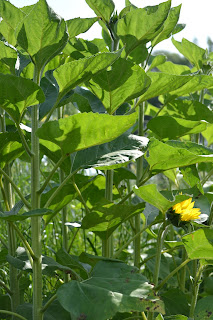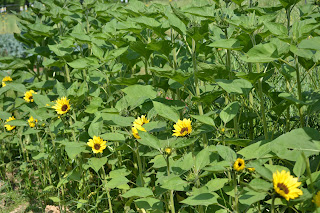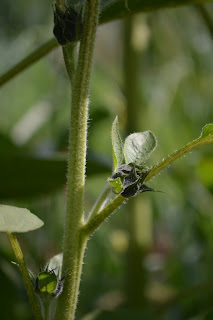Rattle's Garden
Sunrich Sunflowers
Everyone that knows us knows we LOVE to grow sunflowers! They have become our signature crop at every market we’ve attended and we’ve worked really hard to maintain a steady supply of sunflowers throughout the summer. Hopefully this year will be no exception.

With the first big market right around the corner for us (next weekend) I’m happy to see the sunflowers appear to be right on track. A few are open already, a few are thinking about it and a few are holding off. Inconsistency in growth though that started with our early season crops appears as if it will be the story for more of the season.
In the past few years we have grown a variety of sunflower varieties. Most chosen because I wasn’t sure what direction I really wanted to go with sunflowers, there are so many varieties out there. It seems that the two main series of sunflowers grown for cut flower sales are the ProCut series and the Sunrich series. Both are pollenless (a plus when selling to restaurants and customers that don’t want to continually clean up after their flower bouquets) and both are single stem varieties. While we grow a few multi-stem varieties to go in bouquets, the majority of the sunflowers we sell are large single stem varieties that hold their own.
Last year we did a mixture of ProCut and Sunrich sunflowers-unfortunately my record-keeping wasn’t good enough and when they went into the field, we didn’t know which was which. This year I was determined to keep that from happening. I made a decision to only go with the Sunrich series despite a slightly longer time to bloom and slightly higher cost because they are supposed to have a 5-6 inch head versus a 3-4 inch head on the ProCut series.
The first planting we expect to take to market is a mixture of the Sunrich Gold and the Sunrich Lemon. Being from the same series of sunflowers, I expect quite a bit of similarity, differing mostly in color. To my surprise, these two sets of sunflowers could not have acted more different. We sowed three hundred seeds of each variety on the same day in the same conditions. In three days we started seeing the Golds, it took five days to see any Lemons. The final germination rate on the Golds was 95%, on the Lemons it was closer to 80%. When it was time to transplant the Golds, the Lemons weren’t quite ready so we gave them an extra five days in the greenhouse. We did plant them in the same bed as the Golds though, two rows of each with twelve inch spacing. They received all of the same growing conditions from that point on. Same water, same temps, same fertilizer. This is what they look like today.

The tall, thick-stemmed plants on the left that have not started to open are the Sunrich Gold, the significantly shorter, open flower on the right is the Sunrich Lemon. And it looks this way on down the row.
The real kicker for me though is this…the Lemons are going to branch!
So while these flowers will still be of use to us in bouquets, they won’t be giving me the bang that I wanted for the first market of the season at Hillcrest. While I don’t understand what exactly caused this series to branch, given the same growing conditions, I really don’t understand why these two varieties grew so differently.
More proof that no matter how much effort I put in to gardening on paper in the off-season, Mother Nature will always throw me a curve ball.



